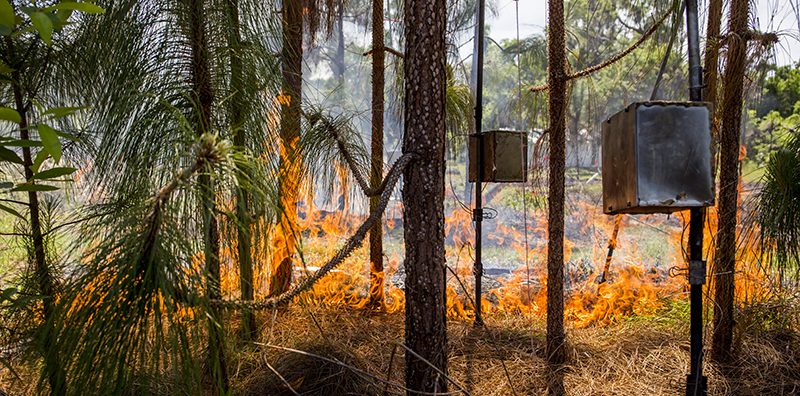UF Study Shows How Climate Change can Worsen Impact of Invasive Plants
from UF/IFAS
by Samantha Murray
- A new long-term study shows how climate change and invasive plants can have synergistic effects on a native tree species.
- The study tested the effects of prescribed fire on long-leaf pines grown under different conditions: drought, invasive plants, and a combination of the two.
- The findings can help inform land management and control of invasive plants to reduce their impacts.
Synergy isn’t always a good thing — take climate change and invasive plants.
Scientists have long hypothesized that climate change, by intensifying stressors like drought or wildfires, would make an ecosystem more vulnerable to invasive plants. Those invasive plants may in turn alter the environment in ways that amplify the impacts of climate change, explained Luke Flory, a professor of ecology in the UF/IFAS agronomy department.
A new long-term field study conducted by Flory’s lab offers the first experimental evidence to support this hypothesis.
The study, published in the journal “Ecology Letters,” exposed small plots of long-leaf pine to three scenarios: drought conditions, colonization by the invasive plant cogongrass and a combination of these two factors.
To test how the different scenarios influenced the trees’ survival, the scientists added another stressor: fire. But before lighting the first fire, the team waited almost six years for the trees to grow under each scenario.
When the smoke cleared, the researchers found that trees that experienced both drought and cogongrass invasion were least likely to survive after fire.

Student assistant sets up passive flame height sensors to measure relative fire intensity under the different global change treatments. UF/IFAS photo by Camila Guillen.
“Less water meant the trees didn’t grow as tall. At the same time, the cogongrass, which is drought-tolerant, provided extra fuel to the fire, making it burn hotter and increasing the height of flames,” Flory said.
Shorter trees plus taller, hotter flames meant those longleaf pines didn’t stand much of a chance, he explained. In plots where the pines were able to grow taller or weren’t surrounded by fire-fueling cogongrass, the trees fared much better and nearly all trees survived.
Experiments that show the interplay of climate change and invasive plants provide important information for land managers in fire-prone areas or areas where prescribed fire is used, Flory said.
/// Read Full Article ///


